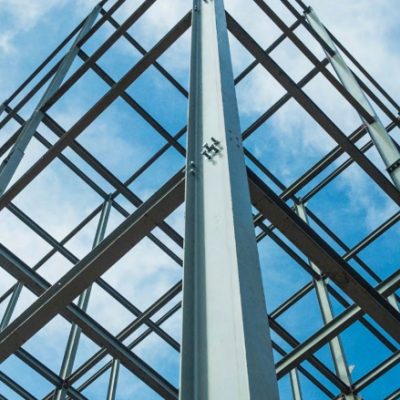Degenkolb’s CEO Stacy Bartoletti published an editorial in STRUCTURE Magazine in July of 2020. In it, he discusses what the future of structural engineering firms in the age of the Coronavirus pandemic. Read the editorial on STRUCTURE Magazine’s site here.
From STRUCTURE Magazine:
As I write this editorial, many communities and cities in the United States are just starting to “re-open” following the Coronavirus pandemic and shelter-in-place orders. My firm, like most, transitioned into a full work-from-home situation in March with only minor issues and challenges. Our business and employees have adapted remarkably well. We are conducting meetings virtually through video calls, developing and reviewing construction documents by sharing data and models, accessing information through the cloud or virtually from our servers, and participating in new project interviews remotely. Employees are doing their best to remain engaged and connected with one another.
The success with which we have transitioned into a remote company begs the question of why return to the old way of working in an office and why not maintain an entirely remote workforce? Answering this question and planning for the future is not simple. For our industry, I do not believe we can assume that what we have done for the past three months can continue into perpetuity. While it may sound appealing to eliminate a substantial portion of the real estate expense from our business and allow everyone to work remotely, I do not believe that is the future of the structural engineering office. I believe we will come to the realization that our physical offices are important to the long-term health of our business and our employees. However, I also believe that we will see a much larger fraction of our employees splitting time between the office and working remotely. Below I offer thoughts on a few issues that I am considering with my firm and the reasons why I believe we will continue to have offices.
Electronic Connectivity – This is perhaps the most straightforward issue to address. Clearly, the past few months have shown that technology solutions exist to allow the vast majority of our structural engineering work products to be completed remotely. At my firm, we are planning to make additional investment in our connectivity and hardware needs to give employees the flexibility to work efficiently both in the office and remotely. We believe this investment will pay off in productivity and engaged employees.
Training and Mentorship – As a professional services firm, much of what we do depends upon a highly-skilled staff that requires continuous training and development. Some of that training comes from formal programs, but I believe the vast majority at my firm comes in the form of mentorship and interaction on projects. Training also goes beyond technical work. Our engineers learn how to interact with clients, deal with difficult situations, and communicate with each other by seeing their mentors and co-workers do it. The personal experience and day-to-day immersion cannot be replicated over a video conference. I believe that we still need to come together in our offices to develop future generations of structural engineers effectively and efficiently.
Mental Health – I have become more concerned about the mental health of my employees as we have extended remote working longer and longer. As engineers, we have the stigma of being loners and anti-social. In my experience, that is not true. Our staff thrives on interacting with one another and enjoys the friendships that develop in the office. I do not believe it can be replicated in a fully remote environment. As engineers and as humans, we need interaction to maintain mental health. During the first couple of months of remote working, our productivity was high. Still, I predict it will decrease the longer our employees are isolated and working in a fully remote environment.
Personal/Work-Life Separation – Before the pandemic, a frequent topic of discussion was personal/work-life balance. After three months of shelter-in-place and remote working, I am now hearing more about personal/work-life separation. This has become particularly challenging for employees with young families. While most employees are enjoying their ability to capture the time that would have been spent commuting to the office, I believe most will still want to return to an office for some of their work time, creating a physical and mental separation between personal and work life.
Flexibility – As we get beyond the Coronavirus pandemic, I believe we will be structuring our offices and work schedules for more flexibility. At my company, I expect that most employees will return to working in an office, but we will also be providing more flexibility for them to work remotely.
Company Culture – Company culture is hard to define since every structural engineering company has its own. At my company, the items I have discussed above contribute to our culture. I do not believe our culture can survive long term with a fully remote workforce; it needs face-to-face interactions. A substantial contributor to how we have been able to survive and thrive, short term in a fully remote environment, has been our company culture and relationships built over years of face-to-face interactions. In essence, I believe we are drawing from our culture bank right now, and we will eventually need to replace those resources.
As an answer to my own question, I believe we will maintain our offices, and I believe the majority of our employees at my firm will eventually want to return to the physical office with their co-workers, colleagues, and friends. I also believe that we will need to provide the flexibility and tools necessary to allow our employees to balance their time between the office and remote work.



